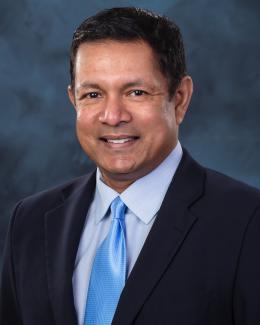A researcher works in a lab in the Radiochemical Engineering and Development Center, or REDC, at ORNL’s main campus. The REDC provides world-class capabilities in isotope production, research and development, source fabrication, and the distribution of various unique isotopes. Here, experts handle some of the most exotic materials in the world. Credit: Carlos Jones, ORNL/U.S. Dept. of Energy
Update: Partnership offers direct career path from Pellissippi State to ORNL
A series of new classes at Pellissippi State Community College will offer students a new career path — and a national laboratory a pipeline of workers who have the skills needed for its own rapidly growing programs.
Starting in fall 2023, Pellissippi State will partner with the Department of Energy’s Oak Ridge National Laboratory to offer a Chemical Radiation Technology pathway under its Associate of Applied Science in General Technology degree. Three new classes – Radiochemistry, Analytical Chemistry and Hazardous Waste Control – will be added to existing Pellissippi State curricula, and two of the classes will be taught by experienced ORNL scientists on the college’s Hardin Valley Campus.
The Chemical Radiation Technology pathway will give students a new option that will prepare them to enter the workforce in places such as ORNL and the Y-12 National Security Complex – without first completing a bachelor’s degree.
“This pathway creates an opportunity for students who are interested in science and engineering to find a lifelong, high-wage career while working along the nation's top scientists, conducting cutting-edge research, and enabling our community and nation to continue to innovate,” said Kane Barker, dean of Natural and Behavioral Sciences for Pellissippi State.
It also connects Pellissippi State students with employment opportunities, summer internships and facility tours at ORNL.
“Our growing workforce requires skilled and talented people,” said Balendra Sutharshan, associate laboratory director for ORNL’s Isotope Science and Engineering Directorate, or ISED. “We need students with a basic skill set who can apply to join us as radiochemical or nuclear operations technicians.”
Cynthia Jenks, associate laboratory director for ORNL’s Physical Sciences Directorate, or PSD, said Pellissippi State offers the ideal location, resources, staff and diverse student population to help the lab address its need for qualified workers.
“We look forward to helping students gain these skills and decide whether a career at a national laboratory is right for them,” Jenks said.
ORNL and Pellissippi State already have begun laying the groundwork at the college, with ORNL scientists speaking to students in chemistry classes during the Fall 2022 semester. Y-12 partners will share opportunities with prospective students at upcoming job fairs and student orientations.
Students who complete the two-year academic pathway and an internship program become strong candidates to apply to ORNL’s radiochemical and nuclear operations technician jobs across the lab — and ORNL expects it will need to fill a growing number of these jobs as it increases isotope production. The DOE has tasked ORNL with bolstering domestic production of isotopes, which would reduce U.S. dependence on foreign suppliers for these rare and expensive materials. Last year, ISED added a new division specifically for isotope production and manufacturing, and PSD has seen an increased need for expertise in radioanalytical chemistry.
ISED R&D associate staff scientist Clarice Phelps, who has headed development of the program at ORNL, is excited that the program offers students the opportunity to work at ORNL without completing a bachelor’s degree, although those who wish to pursue more advanced degrees will be encouraged to do so.
“This academic pathway is accessible to anyone who applies to Pellissippi State,” Phelps said.
Fall registration begins April 3. For more information on the Chemical Radiation Technology pathway, contact Dean Kane Barker at kmbarker1@pstcc.edu or 865.694.6695.
This press release originally appeared on Pellissippi State’s website.





